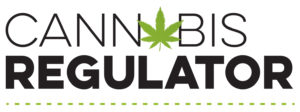Pot parties have quickly become an offshoot of the spreading legal-cannabis movement in America. These are public events like concerts or beer dinners that welcome people to consume socially in public while experiencing other forms of entertainment at the venue. They’re growing in number.
For a peek of what these functions might resemble in your state, look westward. California has always been the hub of American cannabis culture. It makes sense, then, that this state is producing cutting-edge pot parties.
What are these like? To understand the most effective (and safest) kinds, you first should understand the worst. According to reports, the least-consumer-friendly pot parties typically entail overdone branding, too much consumption (including bong hit contests) and social settings — like cramped windowless rooms or sunbaked outdoor venues blasting music — that are ill suited for public cannabis events.
In other words, these are the worst of boozy festivities, the lazily planned spring break parties, grafted onto cannabis culture. That doesn’t work. When people consume pot they feel much different than when they drink. Successful cannabis parties stimulate guests in more creative, sensory manners.
Katie Partlow of Little Face events seems to have figured out what cannabis partiers want. She’s the subject of two recent articles, from Rolling Stone and Leafly, that positively review her events. Marijuana regulators and law-enforcement should take notice, because these functions likely represent the future of responsible, nuanced cannabis parties.
Partlow focuses on the senses, rather than intoxication. She urges guests to go slow. Activities are designed not to overwhelm but to stimulate. There are thought-provoking art installations and live entertainment. During a dinner portion at one event guests were blindfolded so that their sense of taste was further elevated while they ate eclectic, exotic dishes.
Brands are present but not pushed. Partlow seems to let product speak for itself. Guests can select from a variety of consumption methods, “sampling from stations of vape pens, glistening buds and bongs, low-dose infused truffles, pre-packed one-hitters and non-psychoactive CBD mocktails,” reports Rolling Stone.
Other activities include sound baths. Guests lie on comfortable mats and allow music — at Partlow’s recent party, a “gong, a glass bowl, a digeridoo and some chimes” — to wash over them for good vibes. Not social, but sensory.
Partlow has also organized events centered on comedy and cake, chicken and waffles with west coast hip-hop, and cannabis-themed cabaret.
“At all my events, the focus is around art and community,” Partlow told Leafly. “I focus on the things I know and love best—food, performance, and laughing.”
Legal-weed states that are not as progressive as California have been slow to allow cannabis parties. Denver politicians only recently approved such events, while regulators in other states appear hesitant to grant their approval.
Considering the initial wave of events, the parties focused on intoxication and extreme partying, who could blame officials for exercising caution. But Partlow and other event-organizers have demonstrated that there is possible a different kind of cannabis party. One that focuses on responsible consumption and sensory experiences.
So long as these events remain within such parameters, and with minimal brand marketing, regulators should keep an open mind to pot parties as another way to help spread the safe side of cannabis culture.
Kyle Swartz is editor of Cannabis Regulator. Reach him at kswartz@epgmediallc.com










